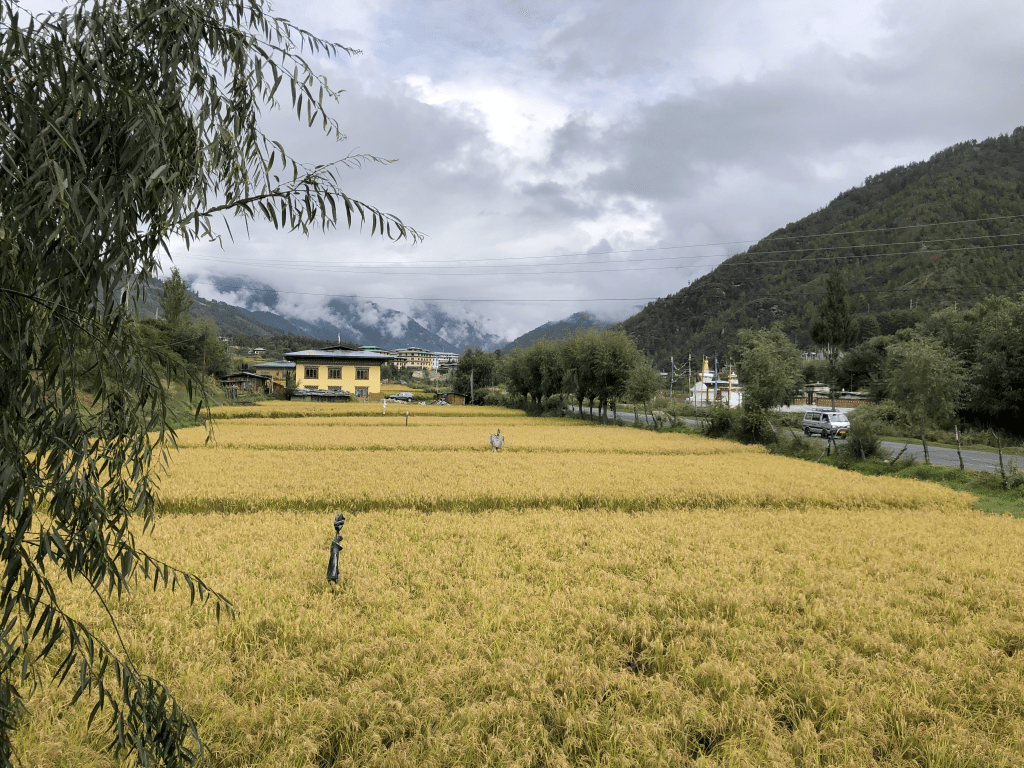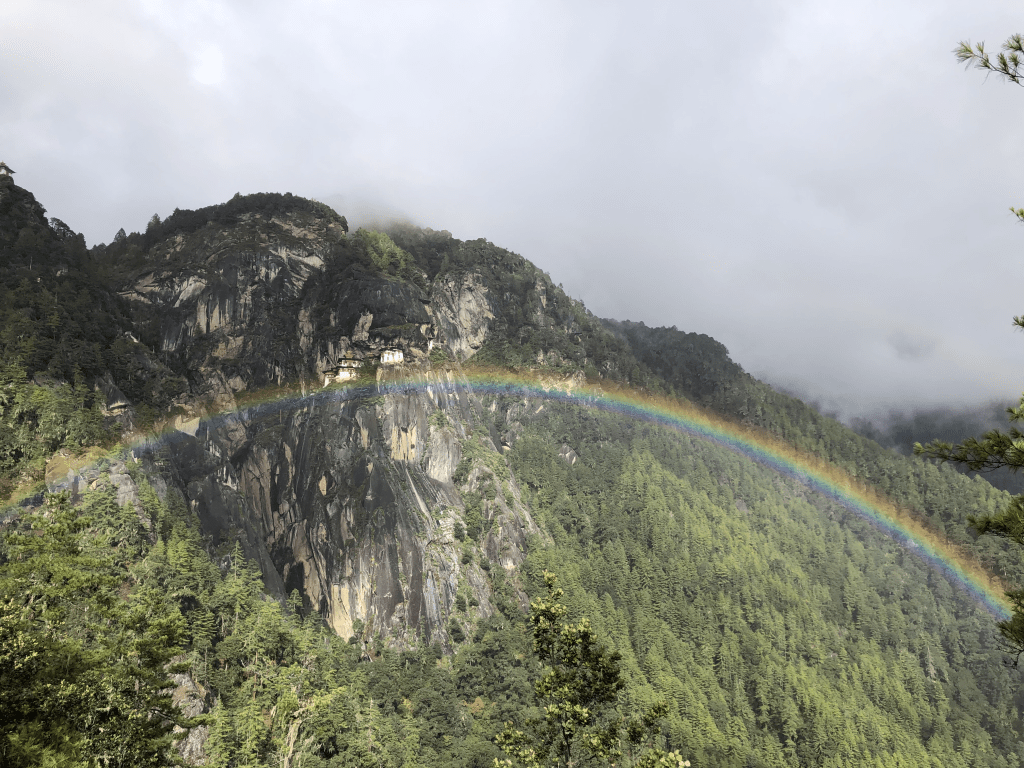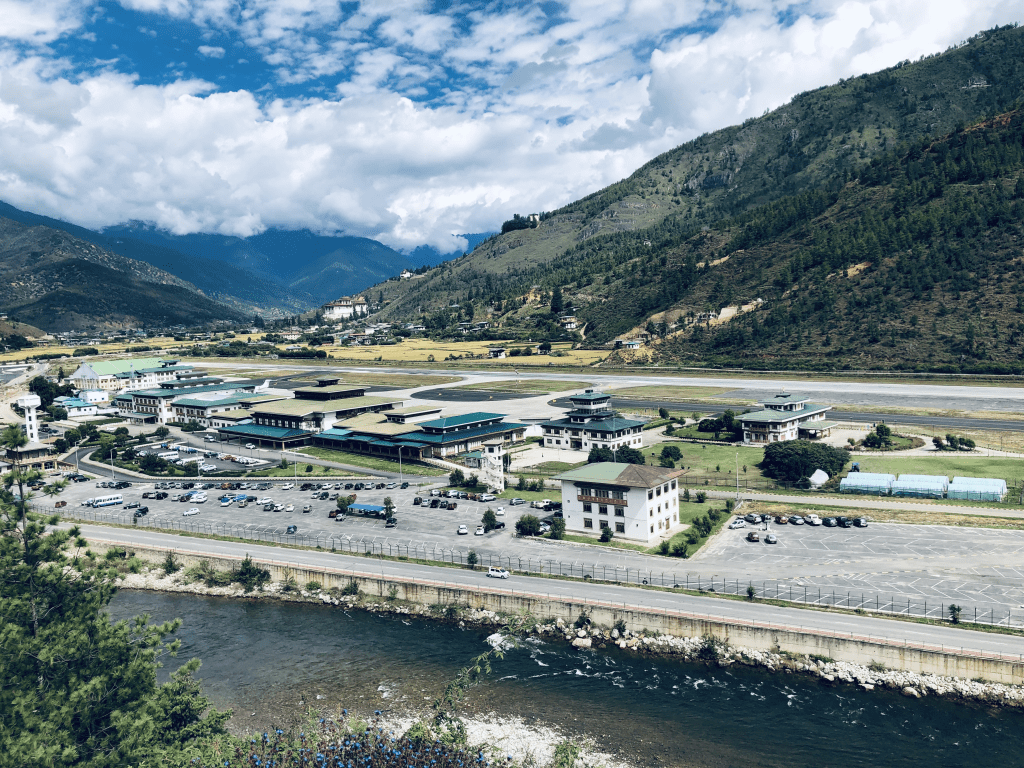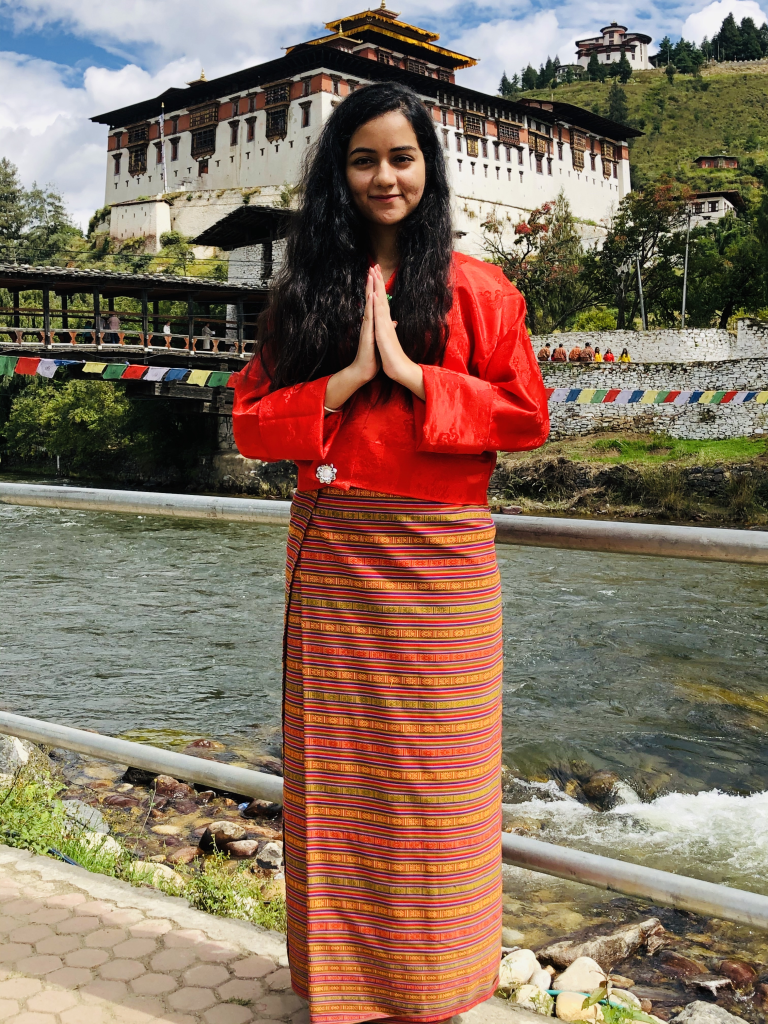If I had one wish to make, I would ask for happiness! With its natural beauty, peaceful aura, and as one of the happiest countries in the world, Bhutan was a natural attraction to me. I was thrilled when things finally fell into place & I was going to visit the mystic land.
Most of my trips have been unplanned. One day, I was discussing with my friends about utilizing our upcoming holidays and a couple of days later we were on a train to Bhutan.
Reaching Phuntsholing: The border town
Traveling through trains and cabs, we reached Jaigaon, the border city between India and Bhutan. The moment I stepped inside Phuntsholing, the grand entrance, stark level of cleanliness, and vibrant outfits marked the onset of a different culture.

We reached Bhutan in the first week of October 2019. The upcoming three days (8-10 Oct) were going to be celebrated as the Thimphu Tshechu festival, which is a national holiday in Bhutan. The long lines and frenzy crowd at the permit office indicated the craze of this festival.
We started our journey to Paro and the four-hour-long drive was accompanied by lush greenery and hills capped with clouds. We had booked a homestay through Airbnb. The traditional Bhutanese interiors and old artifacts used as home décor provided us a first-hand experience of the local lifestyle. Surrounded by green fields, hills, and a river flowing nearby, the view from the balcony of the house was breath-taking.

We spent the evening walking around the banks of the Paro river and I slept off gazing at the stars from the balcony with the night sky as my blanket.
Climb to the Tiger’s Nest
The next day was planned for a hiking trip to Paro Taktsang, known as the Tiger’s Nest. It is one of the most famous monasteries in Bhutan and is situated at a height of over 900 meters above the Paro Valley. According to some folklore Guru Padmasambhava, a renowned Buddhist guru, and the founder of Tibetan Buddhism reached the Taktsang on the back of a tigress.
We got up early and were embraced with a drizzling sky. After praying for a clear sky for a few hours, we decided to start our expedition to the base of the mountain in our cab. There are many adorable gift shops at the base of the hike.
Unable to resist the colourful craft items, we ended up buying a few souvenirs & sticks for support. As we moved upwards it started raining again and the path turned slippery. Taking a few breaks between, we reached the praying wheels which have been built before the halfway point. With green valleys, miniature homes, and the clouded sky above, the scenery was unparalleled, and we waited to witness the magnificence.

We reached a spot higher in altitude than the monastery and climbed around 700 steps down and 250 steps up to reach the entrance. The final steps are taken over a bridge passing through a waterfall that flows down to a sacred pool.
Once, I entered the temple, the peaceful atmosphere, and the sound of mantras induced a soothing effect. We joined a tour group inside the temple, led by one of the members of the monastery. After spending a few hours in tranquility and enjoying the holy food — Prasad, we started our journey back.

On reaching the halfway, we looked back to catch a last glimpse of the monastery. The grace of the temple had been amplified by a bright rainbow at the backdrop, and we felt blessed to have captured this view. The entire hike took us around 6 hours.

On our way back, the cab driver shared folktales based on the Tiger Nest, about the massive destruction caused by a fire in 1998, and the efforts of the local people who made its revival possible. I was amused by the resilience of the people of this charming country.
Exploring past & present of Paro city

We relished Bhutanese cuisine consisting of Ema Datshi (a preparation of chilies and cheese) and red rice at the homestay at night. The next day was planned for local sightseeing in Paro. We enjoyed the scenic sight of Paro International Airport, sat on the bank of Paro river and rejoiced the music of flowing water. Next we got dressed up in traditional Bhutanese attire near Nyamai Zam bridge, and explored Rinpung Dzong Monastery. While we were enjoying the lush valleys and soothing music of the country in our cab, an iron bridge across the Paro river caught our attention.

We were astonished to know that the bridge dated back to the 1400s. It was a gateway to reach the Tachogang Lhakhang temple. The bridge though was not open for usage by tourists due to renovation work, and we took another nearby bridge to reach the monastery.
We finally went to take a tour of the local market, devoured delicious momos, and spent the evening exploring the city.
Thimphu Tshechu festival: A feel of royalty
The next day we bode adieu to Paro and started our journey to the capital city, Thimphu. It took us about 1.5 hours by cab to reach our stay. We spent the evening strolling around in the city market. Being one of the most important tourist destinations in Bhutan, the market area was full of shops selling local craft items.
The next day, we visited the Tashichho Dzong, which is a Buddhist monastery and the central secretariat of the current Bhutanese government. Our trip schedule coincided with one of the biggest festivals in the country, Thimphu Tshechu. It is a 3-day celebration held at Tashichho Dzong in the city of Thimphu. I was amazed to see a huge swarm of people of diverse age groups, dressed in vibrant traditional Bhutanese outfits going to the Dzong.

I couldn’t resist my curiosity and later discovered that tourists from different corners of the world visit Thimphu to be a part of these festivities. The celebrations have historic significance and are preceded with rituals aimed at invoking the local Gods. The festival is also attended by the members of the Royal family and despite my several attempts, I failed to get their glimpse. Witnessing the masked dance forms, listening to their folklore in the majestic atmosphere revived my childhood memories of watching TV series based on East Asian royal kingdoms. This feeling was strengthened by the sight of the royal palace outside the Dzong.
A few hours later we landed in the weekend market. With a long trail of shops filled with colorful crafts, textiles, gift items, and regional delicacies, it is a perfect place to buy souvenirs for family and friends.
Thimphu: Where tradition meets modernity
The next day was the last day of our trip. With the desire to make the most of it, we started our hopping voyage from National Memorial Chorten in Thimphu. It was built in remembrance of the third Bhutanese King, Jigme Dorji Wangchuck, and also preserves beautiful mural arts.

The trip would have been incomplete had we not discovered the folk heritage & rural history of this lovely kingdom. With this desire, we entered the world of the Folk Heritage Museum. It preserves the lifestyle, culture of traditional Bhutan in the form of artifacts, utensils, home structures, and items used by the locals in their day-to-day life.
Seeking blessings from the Buddha Dordenma
Throughout our stay in Thimphu, my eyes were fascinated by a gigantic statue of the Buddha situated far away on a hill. After climbing around 200 steps, I was about to give up, until I saw the calm expression on the face of the Buddha Dordenma. The grand statue which aims at bringing peace to the world and the view of the city from the courtyard was worth half an hour climb.
Inside the grand statue, we discovered thousands of bronze statues of Buddha of height ranging from 8-12 inches. The entire architecture, paintings, and the mesmerizing sound of prayers inside the statue was a feast to my soul. At the end of the day, we packed our bags and set off on our ride back.
Throughout this tour, I tried to find what made Bhutan one of the happiest nations, was it the grace of natural gorgeousness or the blessing of Buddha or something beyond? While I didn’t find the exact answer, talking to the local people made me realize the significance they put on living life in its natural form, respecting traditions and rejoicing in their festivals. My eyes met smiling faces every time I looked around.
This trip for me was a big step towards breaking the inner inhibitions for traveling. With vivid images of the people, places, traditions, and a feeling of calmness, Bhutan gave me memories to be cherished for a lifetime.
Some tips:
How to reach Bhutan
Train: There is no direct train service to Bhutan. Trains can be taken to New Alipurduar, Siliguri, New Jalpaiguri Station or Hasimara followed by cab/bus to Jaigaon (Border city between India and Bhutan)
Air Ways: Paro (International Airport) is connected with Delhi, Bagdogra, Guwahati, Mumbai through connecting flights. Direct flights can be taken from Netaji Subhas Chandra Bose International Airport in Kolkata.
Best time to visit
March- May and October-December
Things to keep in mind
Keep enough cash to be safe. We had difficulty in withdrawing money from the ATMs.
Indian currency (50 & 100 rupees denominations) is accepted across Paro and Thimphu.
Check if your Debit/Credit card is valid in Bhutan.
Citizens of India, Bangladesh & Maldives need to carry a Passport/ Voter Id card; for other nationalities visa is mandatory.
Respect the traditions & follow the local instructions if visiting a sacred site/ monastery.


Great pictures. Your blog is awesome!
LikeLiked by 1 person
Thanks a lot Arv!
LikeLiked by 1 person